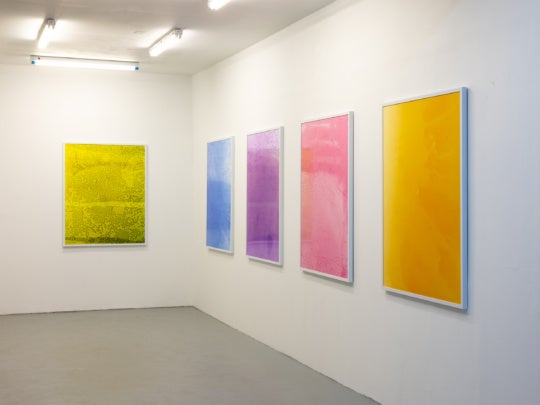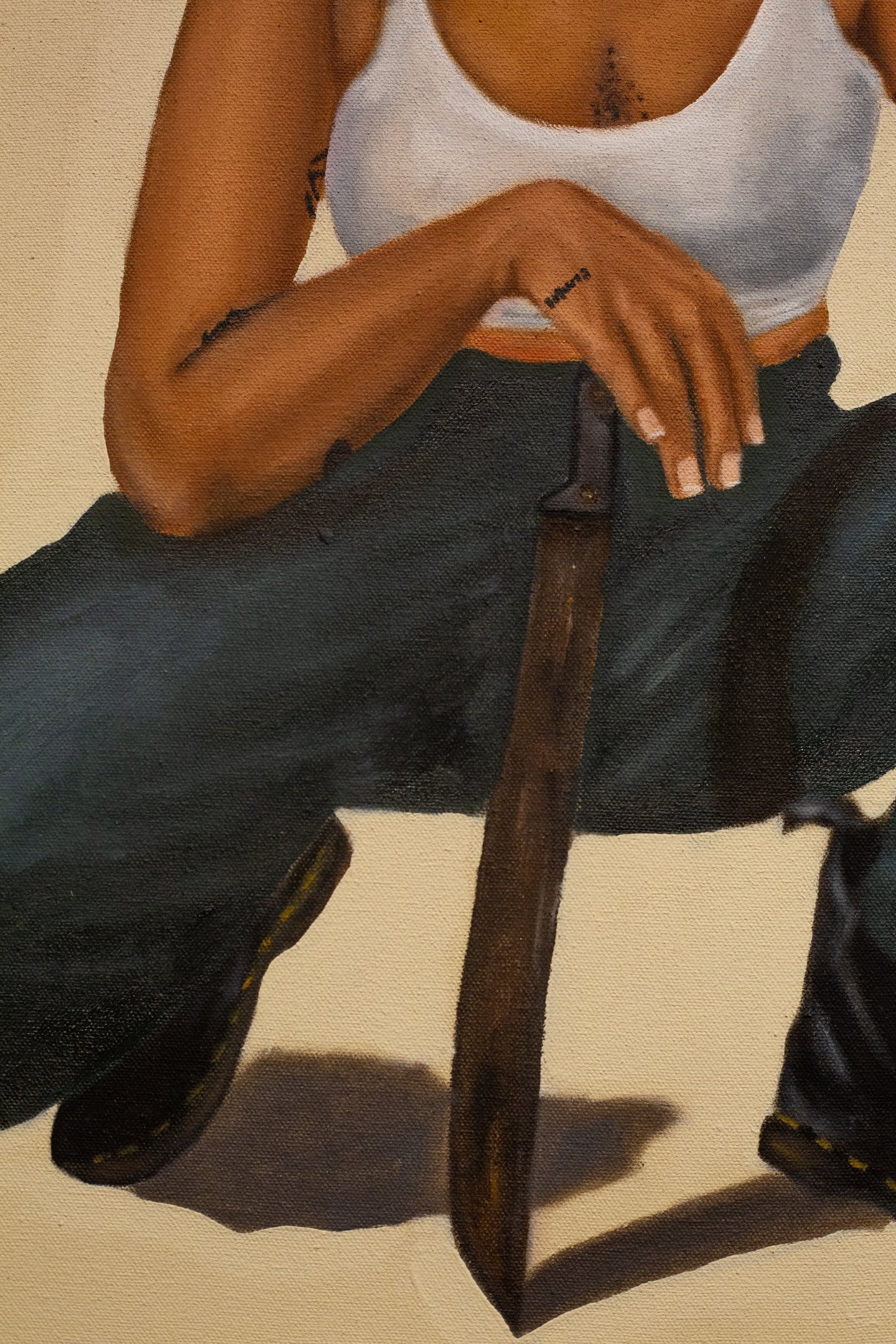As we put 2022 behind us, Burnaway’s staff looks back at our favorite pieces, essays, and other cultural production from the year.
Favorite Pieces from Burnaway 2022
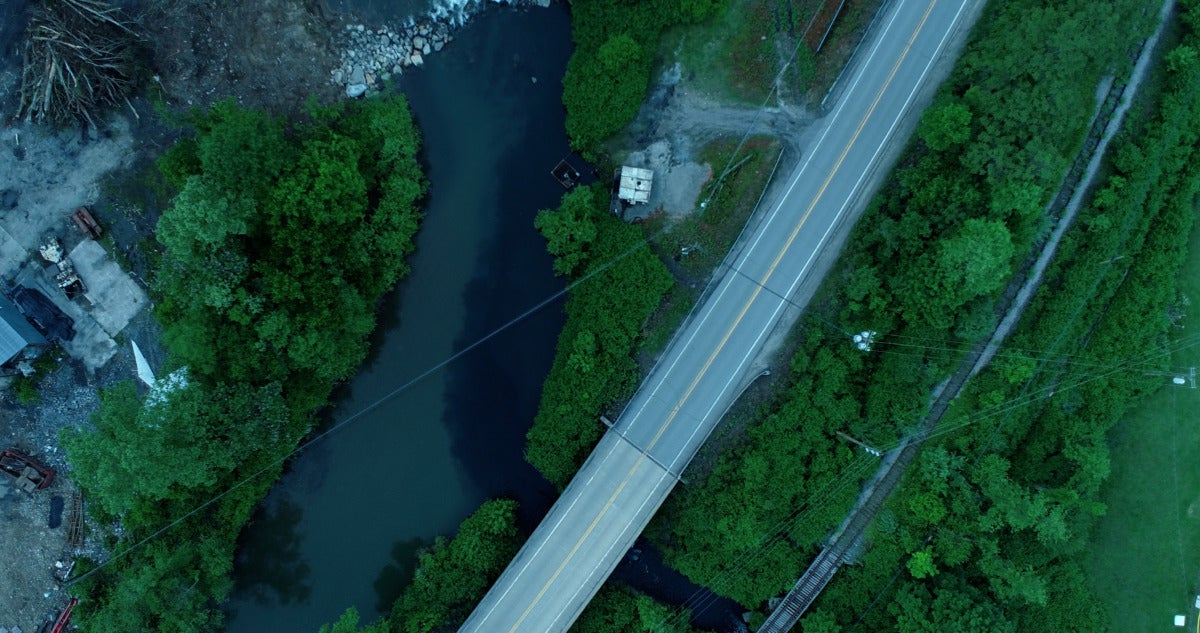
For this Invasive Species theme story, Elena, Junior and Will stared down one of the most destructive forms of resource extraction on earth – Mountain Top Removal (MTR) — and produced stark, fierce images. The title of the project is the Permit Number for the application to renew Twilight III, a West Virginia coal mine.
Bryn Evans, Assistant Editor
“Candice Lin at LSU Museum of Art, Baton Rouge”
Renee Royale conducted extensive research in her review of this LSU exhibition, and she does a phenomenal job at elucidating the nuances of the history of Chinese indentured labor in the American South, a subject that deserves much more critical attention.
“Hold/Whole: What Could Have Been Has Not Yet Appeared, Dallas Museum of Art”
Laura Neal’s seraphic meditations on Naudline Pierre’s paintings were a definite highlight of the year. I often return to this piece and consider it a Burnaway must-read. Her ekphrastic writing was the inaugural entry in Burnaway’s poetry column, “Out, Utterly.” I cannot imagine a better way to mark this new beginning.
“to glance through her curtains: Sara Madandar’s The Window at The Front,” New Orleans
The Front is one of the premier art incubator spaces in the country, and Lucia Olubunmi R. Momoh’s visit to Sara Madandar’s The Window is one of my favorite short-form pieces from the past year. Momoh’s review is a considered example of the gallery’s mission to be a space that encourages autonomous experimentation for and by artists. As I peruse their upcoming exhibition, I am thrilled to see what they do next and hope to visit the space soon.
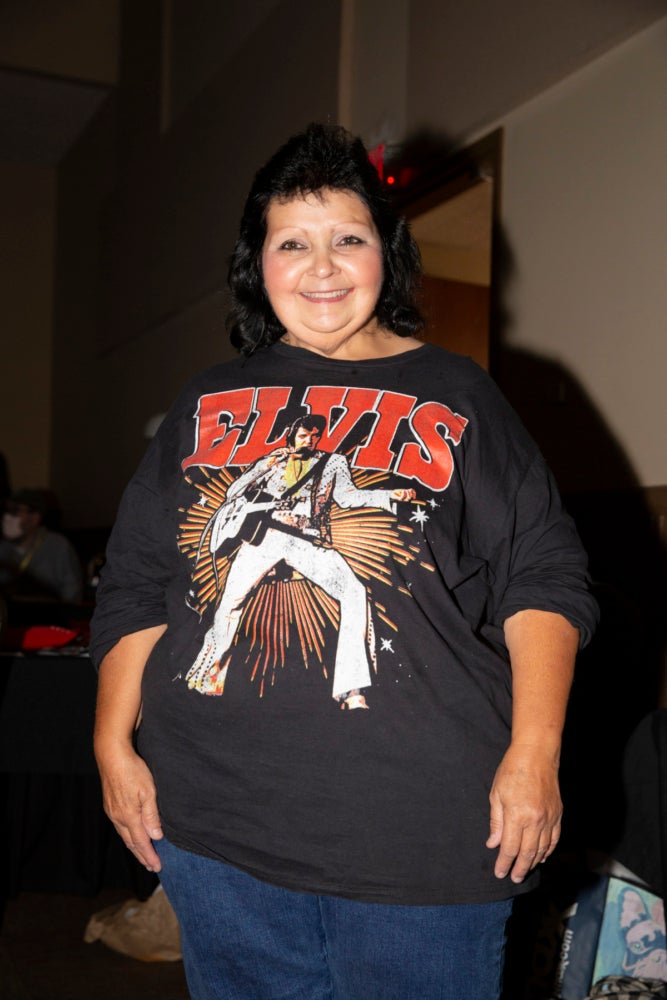
Emily Llamazales, Programs and Development Coordinator
The Big E: Joni Mabe by Annie Moye
Elvis fever never dies. Once again it seems to have resurged, ushered in by the summer release of Elvis from director Baz Luhrmann and the ongoing Oscar campaign of Austin Butler who depicted the legend in this most dizzying biopic yet. Elvis fever is set to continue in 2023 with the release of Sofia Coppola’s film Priscilla based on the memoir by the King of Rock n Roll’s daughter. I too contracted a bit of this fever when I traveled to Memphis, TN this past summer and dedicated half a day to traversing through Graceland. In thinking of my plans to visit Memphis, I remembered Annie Moye’s 2019 feature for Burnaway on the artist, archivist, and host of the annual Big E festival, Joni Mabe. We asked Moye to update this earlier piece with this feature in the magazine’s Artist Environment theme. In her hilarious account of the Big E Festival, she chronicles legends of Elvis impersonators past, the competition criteria, and the myriad of folks who come out to experience this kind of living history on a hot August weekend.
Brandon Sheats, Executive Director
What Could Have Been Has Not Yet Appeared by Laura Neal
Even the angels have angels.
Laura Neal’s interpretation of the Dallas Museum of Art’s exhibition from earlier this year was gently moving, very nurturing, and just go read it. Really. It matches the possibility of Naudline Pierre’s paintings, the vibrance, the silence, the embrace.
Our Mascots, Ourselves by Jasmine Amussen
From the outside, the south is an absurd place, but isn’t the entire United States? Nationally, we’re going through a Dadaist/Indie Sleaze/hypercapitalist/Y2K/shrug emoji moment, so there’s little room to judge, but the rest of the country is right about one thing. The absurdity of the Southeastern Conference (SEC) in American college football is not to be mistaken, and impossible to understate. The way Jasmine captures how football is our region’s catharsis and a response to the national gaze is *chefs kiss*.
Kat Eaves, Social Media Coordinator
Oliver Lee Jackson at the St. Louis Art Museum by Del O’Brien
Our Mascots, Ourselves by Jasmine Amussen
Jason Katz, Contributing Editor, Miami
Our Mascots, Ourselves by Jasmine Amussen
The Spiritual Sound Technologies of Jamaica by Iman Person
The Abstract Painting of Loriel Beltran and Tomm El-Saieh by Douglas Markowitz
Isabella Marie Garcia, Intern
Bless me before you go: Envisioning Black sanctuary in bell hooks’s “Appalachian Elegy” and Moses Sumney’s “Blackalachia” by Bryn Evans
After seeing Moses Sumney perform on the sandy trenches of the Pérez Art Museum Miami during Miami Art Week 2021 in front of a windy nightfallen Biscayne Bay (and having my first in-person date / kiss with my partner at the time in the path of this man’s heavenly voice), I find a certain respite in reading Bryn’s penned encapsulation of Black belonging in rural environments through the writing of bell hooks and the music of Moses Sumney. What solace can be found in the silence and wilderness of Southern mountains, valleys, and fields?
Jen Delos Reyes AWRI Public Lecture: Scaling Back One’s Life
As a participant in the 2022 Burnaway AWRI program, the public lecture given by Jen Delos Reyes really gave me the extra push I needed in my life to take the risk of scaling back my life to a proper fit and size for my desires. At the time of the lecture, I felt tossed around and burnt out from working in the commercial gallery world. My bullet journal contains still the scribbles of notes i.e. “Making a practice that fits my life…” and “…towards abundance and away from scarcity…” that resonated with a vision for my life that I wanted to actively seek for myself and make a reality. A week later, I quit my job of three years and dedicated myself to finding positions and gigs in the fall that aligned with my energy. I even visited Jen’s farm in Chicago in October on a family trip and met Madeline the ground caretaker! There were goats and chickens, and I picked kale and chard for the Mckinley Park community pantry. For the first time in a while, I felt content with where I was stationed, both personally and professionally.
Favorite Non Burnaway Pieces
Jasmine
Why It’s Taking So Long / Sick Woman Theory – Topical Cream, March 2022.
Topical Cream’s 2021 EIR and 2022 AWRI mentor Nora N. Khan edited the new companion essay to Sick Woman Theory by Johanna Hedva, which was revised and updated by the author in 2022.
Dead Ascending a Staircase – The Baffler, November 2022.
Amir Farjoun’s article about architecture built for no purpose other than surveillance and death made my head swim this year. The idea of a death machine is nothing new – from Futurama’s Suicide Booth to Agustin Mallo’s Death Building in the Nocilla Trilogy – people have pondered different ways to exit this plane. What makes the Vessel so interesting to me is because as Amir points out, there is no reason for its existence beyond the vanity of a rich person. The Golden Gate Bridge in San Francisco at least takes you from point A to point B. The Vessel is ugly, expensive, rife with surveillance and capitalist excess. Because of the continued suicides at the Vessel, it has closed indefinitely, which has lead to a fascinating bit of vaporware. After reading this article I went on a hunt for all the media produced by the Vessel (its funders, architects, whatever) about itself. I managed to only find a couple pieces. A truly American bit of architecture.
Bryn
“The Days We Love,” Office Magazine
A gorgeous beam of Black love and queer pleasure. This conversation between curator and photographer Naima Keith and her fiancé artist Sable Elyse-Smith, with photography by Elliot Jerome Brown Jr., represents my favorite types of interview — intimate, easy-going, and between loved ones. Kind of like when curator Rujeko Hockley spoke with her husband Hank Willis Thomas as he was honored at the Studio Museum’s Lea K. Green Artist Talk in 2020. To this day, I am enthralled by Brown’s intimate black-and-white photographs for this conversation featured in Office Magazine. It is so beautiful to witness two people you have admired for years express that admiration for each other.
If you know me, you know I love the Black archive. I find so much joy in family photographs, church bulletins, Bible annotations, yearbooks, and magazines. Jake Yuzna’s interview with my outstanding and incredibly sexy friend Cameron Downey, the current artist-in-residence within the Walker’s Moving Image Department, speaks to the archive’s necessity and ineffability. If you’re waiting for an introduction to the Twin Cities, “Nobody Does it Betta” than Downey.
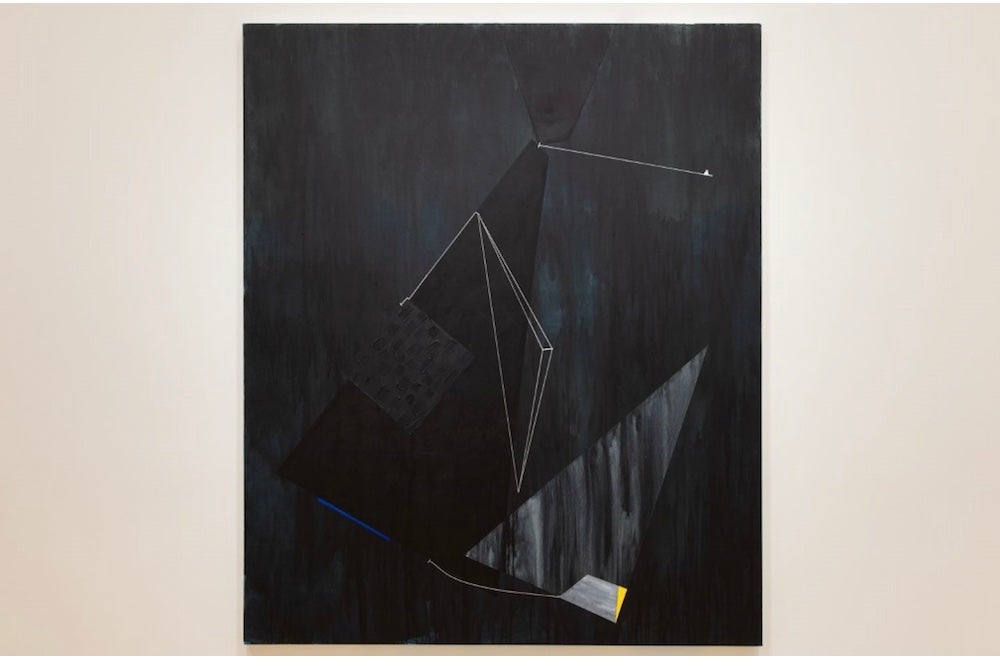
“Rearrange: Torkwase Dyson and Black Feminist Breathing,” Momus
Yes, I am shamelessly using this as an opportunity to shout-out my sister-friends. In 2021, Chicago-based writer Camille Bacon gathered seven Black women to meditate on Torkwase Dyson’s painting Presence, Takes Courage for a Body to Get Down There (2020). She includes all of my favorites — Alexis Pauline Gumbs, Aimee Meredith Cox, adrienne maree brown, Elizabeth Alexander, Harriet Jacobs, and Harriet Tubman — as interlocutors in a thoughtful consideration of Black interiority, respiration, and presence. There is so much here, and Bacon reminds us that it is for us, for us, for us.
Emily
A DIARY IN ALPHABETICAL ORDER by Sheila Heti, 10 part series in The New York Times
I began keeping a diary of sorts more rigorously in 2021 and this year I kept that new habit alive by reading the diaries of others. I purchased the 1971 Journal of Rosemary Mayer at the beginning of the year and read along with each entry in real time as 2022 unfolded. When I saw the announcement of Heti’s NYT series, I immediately followed along as each week a new set of letters was published over the course of a couple months. Heti’s writing was new to me, but her expressions–though read at random as they intersect over ten years of alphabetization, held in them a resounding comfort. Specific and absurd, they reflected my own journal. There’s a perverse feeling in reading someone else’s diary, whether they be dead or alive, but that also makes it all the more thrilling to read. And sometimes don’t those of us writing about our own lives in a little notebook often fantasize about the horror or taboo excitement of others reading it one day? After all, the writing might be just for you, but there’s so often an audience slipping in and out of mind too.
Brandon
Harmony Holiday on Kendrick Lamar – 4Columns
John Coltrane’s Giant Steps is a transgression of form. Kendrick Lamar is a transgression against the psychic code (and some say function) of rap. Both teach us that something has to break in order to progress. Harmony Holiday draws that line between them in a much better way that this describes. I keep going back to her essay on Lamar’s latest release, Mr. Morale & the Big Steppers, as I’ve found myself navigating between Lamar and Coltrane musically and mentally this year.
Kat
Thin City, or: Artifacts of (Tire) Pressure by Nina Sarnelle for X-TRA Online’s Re:Research column. Accompanied photo archive.
Recounting the daily walks she took during the pandemic and lockdown, Nina Sarnelle began a collaborative photo archive of the flattened trash and treasures found on the car-filled roads of LA. I’ve never been to Los Angeles, but reading Sarnelle’s Thin City essay reminded me a lot of Atlanta. She talks of her walks on the pedestrian pathway over I-10 and the history of the LA freeway system. Many of my walks have led me over the Jackson Street Bridge, an overpass in Atlanta above the on ramps to I-75/85 and I relate to her comparisons of these freeways to dry, more dangerous rivers. This essay and archive is a fascinating portrait of a car-centric city, with freeways that “cast darker shadows over some communities than others.”
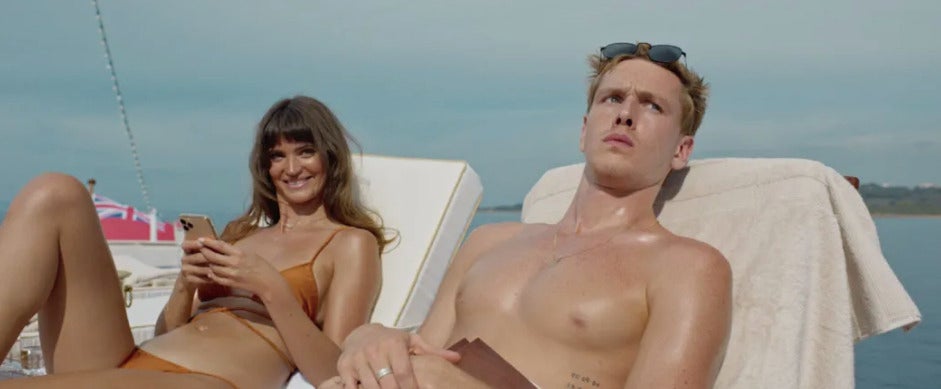
Georgie Carr On Ruben Östlund’s ‘Triangle Of Sadness’ for Another Gaze
A great review of a hilarious and deeply satirical look at elite society in Triangle of Sadness. I watched this movie on an airplane (a space I don’t particularly recommend due to the twenty-five minute long vomit-filled sequence….) and immediately went searching for criticism. Carr poses interesting questions about the self-indulgence and over-consumption in the film and Östlund’s intention and socialist critique. “And so a cinema that is doubly sybaritic prompts the question of who is being over-fed: character or audience?”
Worn Out: Pythagorean For Spring by Cara Schacter and Worn Out: Shrugging Towards Bethlehem by Cara Schacter for Spike
Jason
Wickedest Sound – 99% Invisible
Not-So-Magic Kingdom | Disney Takes on the Affordable Housing Crisis
Isabella
Encountering my grandma’s ghost allowed me to grieve her absence by Cici Peng
NILUYARILO: Saint Sebastian and the transits of the flesh, based on images of Roberto Tondopó by Nadia Villafuerte
When Private Equity Takes Over a Nursing Home by Yasmin Rafiei


